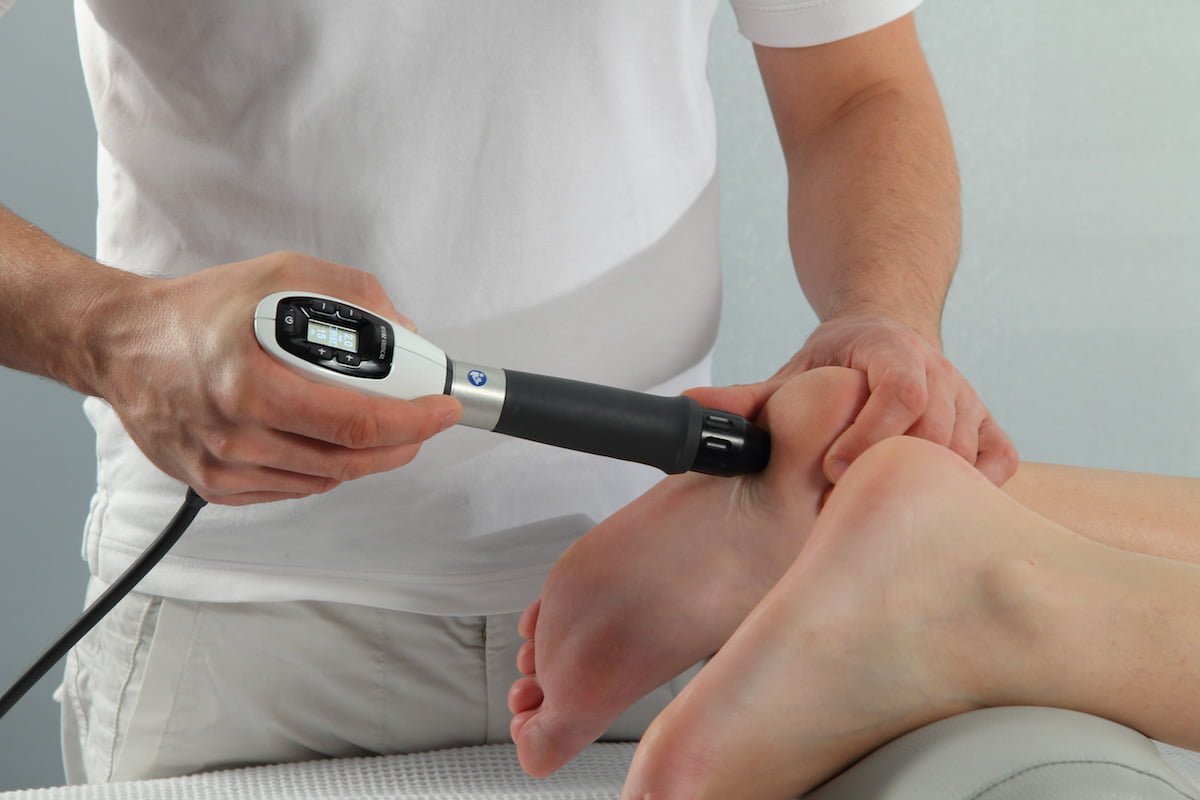
Pressure Wave Therapy – How It Could Help You
Honestly…this is one of the most exciting new treatment offerings we’ve had in the many years I’ve been in practice. Only a handful of practioners in the state of Maryland are offering pressure wave therapy, despite the success of this non-invasive treatment. So here’s how I learned about pressure wave therapy and more details about this exciting new service available at Life Care Chiropractic and Wellness.
Why I’m Offering Pressure Wave Therapy
I came across this treatment technology at a national chiropractor meeting. I was very intrigued, as I had never heard of it before. At the meeting, I spoke to the representative from the company showcasing the technology, and learned that pressure wave is the same approach used to break up kidney stones.
As well, the representative shared the success they’d had in treating patients with plantar fasciitis – a condition impacting many of my patients. I saw that pressure wave could potentially break up the calcification and improve the blood flow, stimulating stem cells. That struck a chord with me…and I knew almost instantly that I wanted us to offer this treatment.
I went back to Maryland and did a bit of research, finding that first, only a few practices offered pressure wave in our state. After getting the equipment and receiving training on how to use it, I used pressure wave therapy on several people – including myself (I had a horrible foot pain). For the majority, the pain was completely resolved with just one treatment! It typically takes three to five treatments for resolution.
How it Pressure Waves Work
Radial pressure waves offer a treatment solution to long term/chronic tendon and soft tissue injuries that is completely non-invasive. No surgery, no injections, no pills. This treatment of the affected area will support and reset the healing pattern (even regenerating damaged tissue!). The process has been shown to improve chronic pain – even if the initial injury or pain condition began many, many years ago. Most patients feel a major reduction or a complete removal of pain.
Our therapist will apply shock waves through a specially designed hand piece that produces strong energy pulses for short periods of time. These high energy acoustic waves are transmitted through the surface of the skin directly to the affected tissue areas in a controlled procedure. Pressure waves have a mechanical effect on the tissue which stimulates the cells in the body which are responsible for healing. The micro trauma of the repeated pressure waves creates new blood flow to the area. It is the new blood flow that promotes tissue healing.
Pressure wave therapy produces an acute inflammatory process in the treated tissues. Your body responds by increasing the metabolic activity around the impacted area which in turn stimulates and accelerated the body’s own healing mechanisms.
Success Stories with Pressure Wave Therapy
Many well-known clinics are using pressure wave therapy to treat a whole host of conditions – the Cleveland Clinic, Johns Hopkins University and Duke University are a few.
The data from research shows that the vast majority of patients with many pain conditions experienced improvement or even complete healing for their pain conditions. Some of the research results include:
- 91% improvement for shoulder pain
- 90% success rate for heal pain
- 77% improvement for elbow pain
- 76% success rate for achilles pain
- 8 times more effective for hamstring pain than regular physiotherapy and chiropractic treatment
Other conditions where pressure wave therapy has been successful are: plantar fasciitis, rotator cuff pain, knee pain, foot pain, ankle pain, back pain, neck pain, hand pain and wrist pain. This therapy is continually being expanded to treatment for more areas of the body and more pain conditions.
The Cost-Effectiveness of This Treatment
Compared to many other treatment options, pressure wave therapy can not only be more effective, but less expensive in the long run.
First, there are no medication or surgical expenses. As well, for many other types of treatments, patients pay a $25-40 co-pay and could need as many as 20+ visits to complete their regimen. To compare, a typical plantar fasciitis patient would require physical therapy (PT) three times per week at a $25+ co-pay over months. This can add up to a lot of money quickly…and may still not yield pain relief.
With pressure wave therapy, less treatments are needed. We are packaging our treatment plans to make it easy and inexpensive for you to take advantage of this treatment:
$300 for three sessions
Fourth and fifth session for $50 each
It typically takes three to five sessions (10-15 minutes/session), and this will be our pricing starting in January.
As an introduction for my patients, I’m offering discounted pricing from now through the end of the year:
$200 for three sessions
Fourth and fifth sessions for $25 each
Again, most patients will require three to five sessions.
So I’m hoping that many of you will consider this treatment option – and spread the word to your friends of family member suffering from one of the pain conditions we believe can improve with pressure wave therapy. For me, it’s one of the most optimistic treatment options I’ve come across in a long time. I am thrilled to offer it – and excited to start helping folks live with less pain or become completely pain-free!

